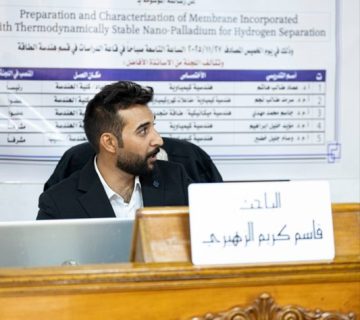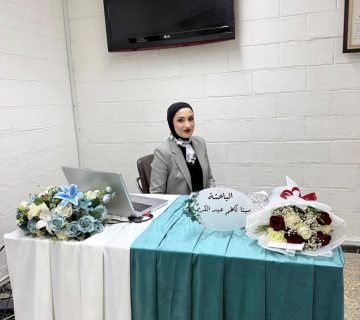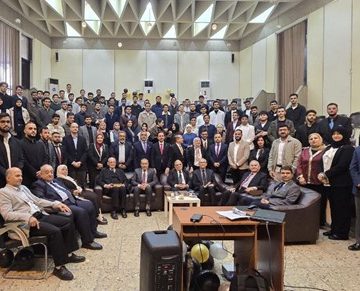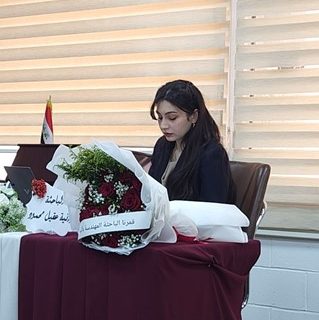The College of Engineering at the University of Baghdad witnessed the public discussion and defense of the master’s thesis by student Mohammed Raed Rasheed from the Department of Civil Engineering. His thesis is titled “Structural Behavior of Concrete One-Way Slab with Mixed Reinforcement of Steel and Glass Fiber Polymer Bars under Fire Exposure.” The defense took place on Tuesday, September 17, 2024, in the Al-Biruni Hall, Department of Surveying Engineering, under the supervision of Asst. Prof. Dr. Shatha D. Mohammed.
The aim of the research was to evaluate the structural behavior of one-way slabs reinforced with a combination of steel bars and glass fiber reinforced polymer (GFRP) bars before and after fire exposure. The experimental part of this study involved testing six identical reinforced concrete slabs, all having the same geometric design and concrete mix ratio. Each sample had a different steel bar replacement ratio with GFRP bars (0%, 20%, and 40%).The slabs were divided into two groups, with each group containing three slabs: the first group was tested under a static two-point load, while the second group comprised slabs exposed to fire, which were tested after being subjected to a steady-state temperature of 500°C for one hour, followed by rapid cooling with water spraying.
The results showed that for the unburned specimens, replacing 20% of the steel bars with GFRP bars increased the ultimate load by 10.7%, and by 5% when replacing 40%. For the burned specimens, the results indicated that the ultimate load increased by 2.62% with a 20% GFRP replacement, while it decreased by 3.13% with a 40% replacement. Numerical analysis using the ABAQUS software aligned well with the experimental results, showing good agreement with the load-deflection curves and the failure mechanisms.
The study recommended expanding the research to include different temperature levels and exposure durations, in addition to investigating the performance of one-way slabs reinforced with a combination of GFRP and steel bars under various loading conditions such as static, dynamic, and impact loads. Furthermore, it is advisable to explore higher GFRP replacement ratios (greater than 40%) to better understand their impact on structural behavior after fire exposure.
After the scientific discussion and evaluation by the esteemed members of the defense committee, the researcher was awarded a master’s degree in Civil Engineering / Structural Engineering.








